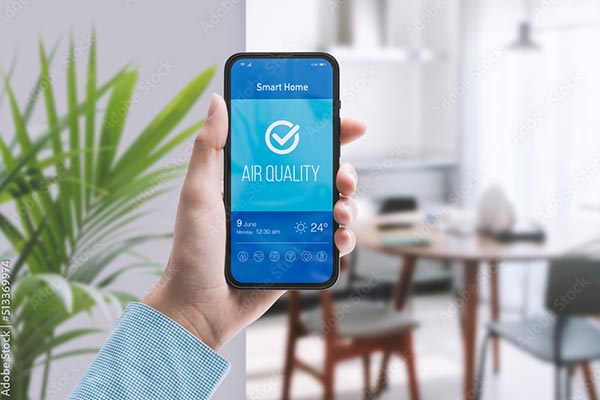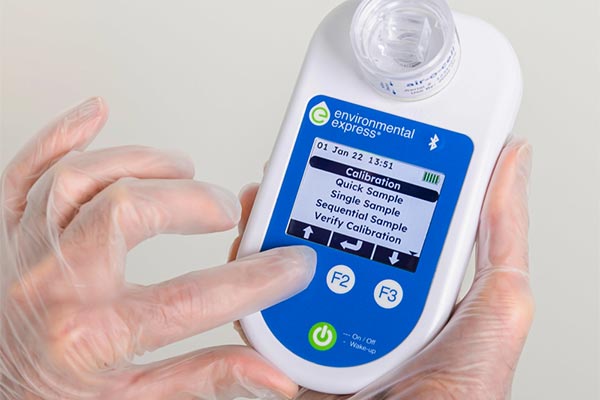Indoor Air Quality Testing



INDOOR AIR QUALITY TESTING
SERVICES IN ROCHESTER, NY
Indoor air quality (IAQ) refers to the quality of air inside buildings and structures as it relates to the health and comfort of occupants. Poor IAQ can lead to a range of health problems, including respiratory issues, headaches, and allergies.
Keep reading to explore the importance of indoor air quality testing, the sources of indoor air pollution, the signs of poor indoor air quality, the IAQ testing process, and more.
What is Indoor Air Quality Testing?
Indoor air quality testing is the process of measuring and analyzing the quality of air in a building. The testing process involves collecting air samples from different locations in a building and testing them for various pollutants and contaminants, including mold, bacteria, allergens, and volatile organic compounds (VOCs).
The results of the tests can help identify the sources of indoor air pollution and provide recommendations for improving the IAQ.

Sources of Indoor Air Pollution
There are many sources of indoor air pollution, including:
Tobacco smoke
Household cleaning products
Pesticides and insecticides
Building materials
Furniture and upholstery
Mold and mildew
Dust and Dust Mites
Pet dander and hair
Outdoor pollution (pollen)
Radon gas
Allergens
Pathogens
Average Costs of Indoor Air Quality Testing
Indoor Air Quality (IAQ) Testing Process

The IAQ testing process typically involves the following steps:
Inspection: A trained professional inspect the building and identifies potential sources of indoor air pollution.
Sampling: Air samples are collected from different locations in the building using specialized equipment. Mold sampling is an important part of air quality testing, especially if there is suspicion or evidence of mold growth in a building. There are different methods of mold sampling, including surface sampling and air sampling.
Laboratory Analysis: The samples are sent to a laboratory for analysis.
Report: The results of the tests are compiled into a report that includes recommendations for improving IAQ.
Surface Sampling:
Surface sampling involves taking samples from surfaces suspected to have mold growth, such as walls, ceilings, or floors. A swab or tape is used to collect a sample from the surface, which is then sent to a laboratory for analysis. This type of sampling is useful in identifying the type of mold present and the extent of the growth.
Air Sampling:
Air sampling is the most common method used to test for mold in indoor air. This involves taking air samples from the indoor environment and analyzing them for the presence of mold spores. Air samples can be taken using either a spore trap or a cassette sampler. A spore trap is a device that traps mold spores on a sticky surface, while a cassette sampler is a device that captures mold spores on a filter.
During air sampling, the testing technician will use a special pump to collect air samples from different areas of the building, including areas where mold growth is suspected or where occupants have reported health problems. The samples are then sent to a laboratory for analysis, where they are examined under a microscope to determine the type and concentration of mold spores present.
It's important to note that mold sampling should be conducted by a qualified professional who has experience in air quality testing and mold remediation. They will know where to take samples and how to properly collect and handle them to ensure accurate results.

Indoor Air Quality Products:

There are several products and tools that are commonly used for indoor air quality testing. These include:
- Air Quality Meters: These are handheld devices that can measure various parameters related to indoor air quality, such as temperature, humidity, carbon monoxide levels, and volatile organic compounds (VOCs).
- Particle Counters: These devices are used to measure the concentration of airborne particles in the indoor environment, including dust, pollen, and other allergens.
- Gas Detectors: These are devices used to detect the presence of various gases, such as carbon monoxide, radon, and formaldehyde.
- Mold Test Kits: These kits are used to collect samples of mold spores from the air or surfaces for analysis in a laboratory.
- Indoor Air Quality Monitors: These are devices that continuously monitor indoor air quality and provide real-time data on various parameters, such as temperature, humidity, and pollutants.
- Thermal Imaging Cameras: These cameras are used to detect temperature differences in a building, which can be used to identify areas of moisture and potential mold growth.
- Moisture Meters: These devices are used to measure the moisture content of materials such as walls, floors, and ceilings, which can help identify areas of potential mold growth.
These products and tools are essential for conducting indoor air quality testing and identifying potential pollutants and contaminants in the indoor environment. It's important to note that air quality testing should be conducted by a qualified professional with experience in indoor air quality testing to ensure accurate results and proper interpretation of the data.
Importance of Air Quality Testing
Air quality testing is an essential step in maintaining a healthy indoor environment. It helps to identify potential pollutants and contaminants that can negatively impact our health and well-being. Here are some reasons why air quality testing is important:
Identify Potential Health Risks: Air quality testing can help identify potential health risks associated with poor indoor air quality. Knowing what pollutants and contaminants are present in the air can help individuals take the necessary steps to reduce their exposure and avoid developing health problems.
Ensure a Safe Living Environment: Air quality testing can also help ensure a safe living environment. For example, if radon gas is present in a home, it can be addressed through mitigation measures to reduce the risk of lung cancer.
Improve Energy Efficiency: Air quality testing can also help improve energy efficiency. If indoor air quality is poor due to a lack of ventilation, individuals may be tempted to open windows or use fans to improve airflow, leading to increased energy consumption. By identifying the root cause of poor indoor air quality, individuals can take targeted actions to improve ventilation and save energy.
Increase Property Value: Air quality testing can increase the value of a property. Homebuyers and renters are becoming increasingly aware of the importance of healthy indoor air quality and may be more inclined to purchase or rent a property that has undergone air quality testing.
Comply with Regulations: Air quality testing may be required in certain situations to comply with regulations. For example, commercial buildings may need to undergo regular air quality testing to comply with Occupational Safety and Health Administration (OSHA) regulations.
Overall, air quality testing is an essential step in maintaining a healthy indoor environment. It can help individuals identify potential health risks, ensure a safe living environment, improve energy efficiency, increase property value, and comply with regulations. By investing in air quality testing, individuals can take proactive steps to protect their health and well-being.
Tips for Improving Indoor Air Quality
There are several things you can do to improve the quality of air in your home, including:
- Keep your home clean and free of clutter
- Use natural cleaning products
- Ventilate your home regularly
- Use an air purifier or filtration system
- Test for radon gas
- Keep humidity levels in check
CHOOSE OUR CERTIFIED
AIR QUALITY TESTING PROFESSIONALS

Indoor air quality testing is an important process that can help identify potential health hazards in your home and improve the overall health and well-being of occupants. By understanding the sources of indoor air pollution, the signs of poor IAQ, and the IAQ testing process, you can take steps to improve the quality of air in your home.
With the help of IAQ professionals and the use of IAQ products, you can breathe easier and enjoy a healthier and more comfortable living space. Remember, the air you breathe is essential to your health, so it's important to make IAQ testing a priority.

